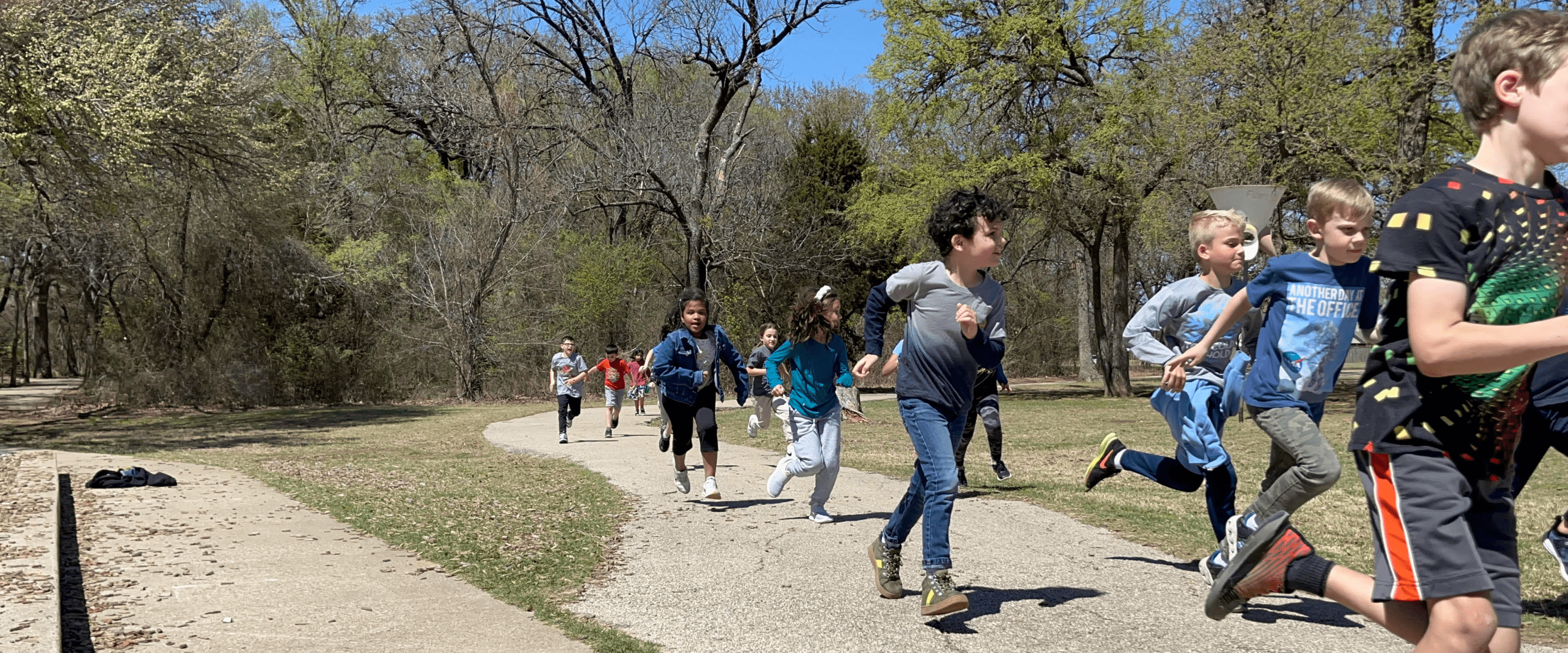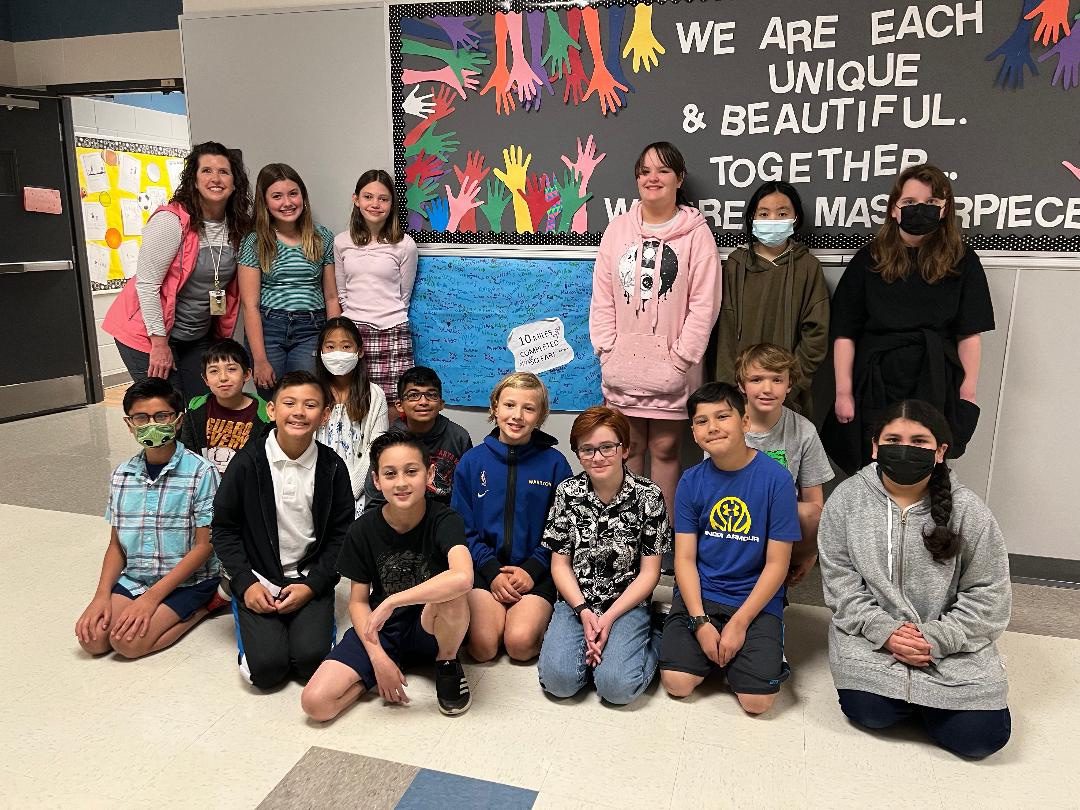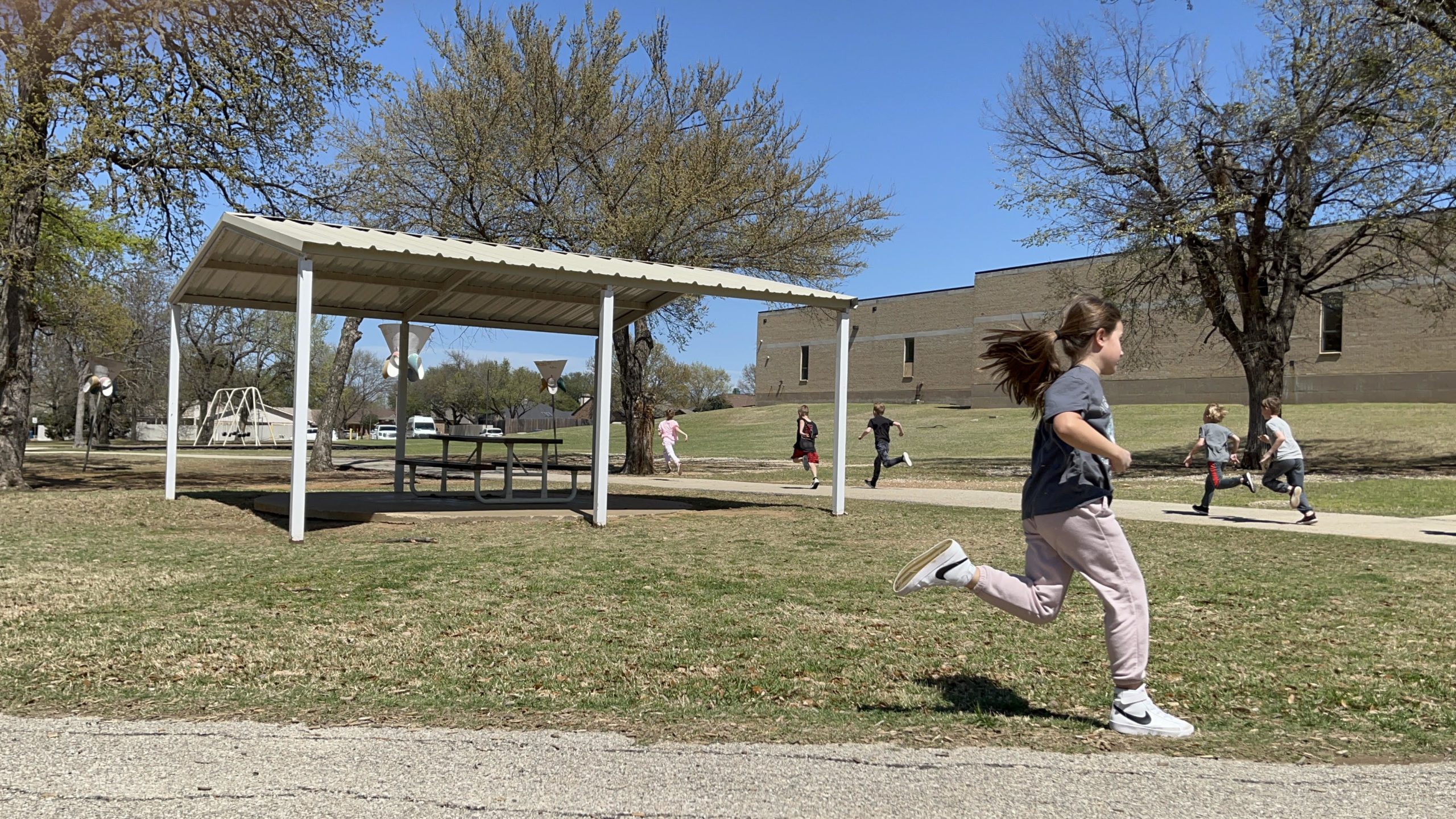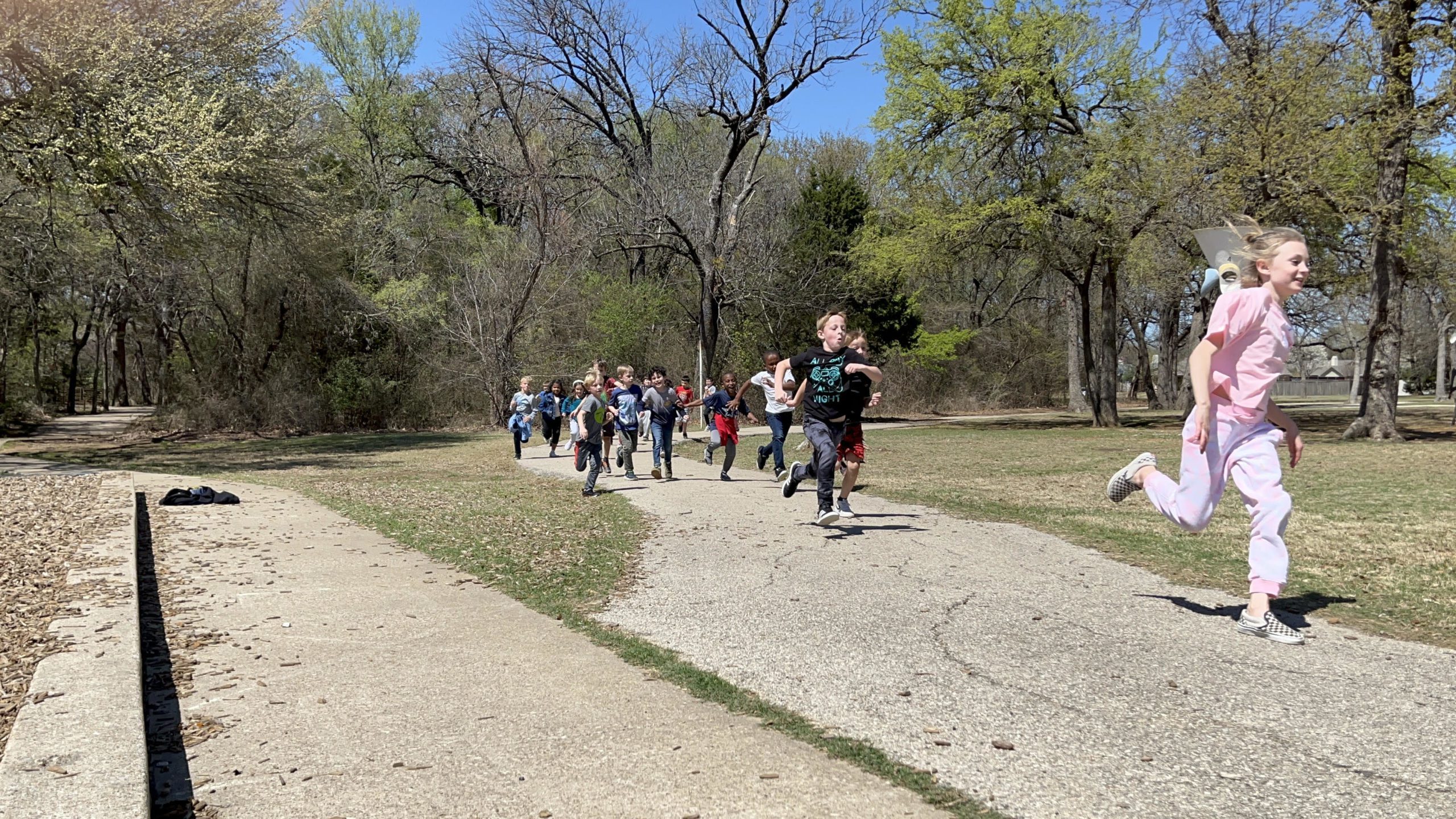
Flower Mound Elementary Students Challenge Themselves to Move
By Catherine Morris
Last year, in the midst of the Covid-19 pandemic, PE teacher Beverly Jordan had a new, central goal: keeping her students at Flower Mound Elementary outdoors as much as possible. In response to her district’s Covid protocols, she started a “Run/Walk/Jog Challenge” at her school to keep the kids moving, and found a program she could use to track their distances.
At first, she says, “I used a program that only let me track the class as a whole because each child had the same QR code. I also had to calculate the mileage myself. The students really wanted their own, individual statistics.”
At the start of the 2021–22 school year, she learned about Marathon Kids at a district training session. The free, evidence-based physical activity program, which digitally tracks kids’ active time, seemed like a better fit for her needs.
All of Jordan’s second- through fifth-grade students now participate in Marathon Kids as a part of their regular PE curriculum. So far this school year, the 348 runners have covered over 2,000 miles together. And the program has been a big success—for Jordan’s students, but also for her as a physical education teacher.
“I have students who have really come to love running,” Jordan says, “some who have previously participated in cross country or track and field, and some who are not thrilled about running and appreciate being able to walk and talk to friends.” She says she feels thankful for the service the Marathon Kids program has provided to her and her campus. “I appreciate being able to keep track of each student’s progress individually!”

Just Keep Moving
Jordan never requires students to run. “They may choose their locomotor skill,” she says. “They can skip, gallop, or even hop! My only requirement is to move!” This philosophy aligns with that of the Marathon Kids program, which emphasizes heart-pumping physical activity in general over any specific activity, like running or walking.
The program counts 20 minutes of active time as equivalent to walking or running one mile. This enables teachers and coaches to include kids’ active minutes as part of their progress toward milestones since the program automatically converts active minutes to miles.
Still, even her students who were not previously runners are falling in love with it, Jordan says. “The students have a sense of ownership and pride in participating and tracking their achievements. Some students have expressed they did not even know they enjoyed running until we started this class activity last year.”
The Benefits of Lifelong Physical Activity
Flower Mound is a small city northwest of Dallas, and Flower Mound Elementary comprises approximately 500 students from various socio-economic and cultural backgrounds. “Our campus is inclusive,” Jordan says, “and has been referred to as ‘a little gem of a campus.’ Our parents and community are strong supporters of our campus, and we are deeply rooted in our community.”
Even with such a close-knit community, there have been challenges for Jordan as a PE teacher. She echoes concerns expressed by many other physical education teachers when she says, “Over the past few years, students seem to be less and less interested in physical movement.” She believes physical activity is important for its positive effects on one’s mental and physical well-being, and considers it an essential part of her job to instill in her students a love of moving their bodies.
“Physical activity has lifelong impacts on a student’s emotional and physical health. Not all students will love running—they may find walking as their preferred outlet, and that is okay. Other students may discover yoga through our yoga activities, or even dance through our dance activities. My hope is that by the time our students reach fifth grade, through experiences in PE, they will have found a form of physical exercise they will maintain throughout their lives.”

Making Physical Activity a Daily Routine
Jordan has built Marathon Kids time into every PE class with her students, and the Run/Walk/Jog Challenge she established last year is now a daily part of her elementary PE lesson plans. “All students go to our walking path and walk, jog, or run,” she says. “Each class typically stays outside for seven to 10 minutes—as long as it is above our minimum temperature and below our maximum temperature.”
Some students are able to complete a mile in that time, Jordan says, and many of the walkers typically finish a half-mile. “The runners are self-motivated,” she says, “and the walkers have time to talk to their friends while they are walking. What a great way to exercise!”
After her experience with the first running program she used with her students, Jordan appreciates that each of her students is assigned a unique QR code. This makes it a snap to scan their ID cards with the Marathon Kids Connect app and track their progress. “I deeply appreciate the mileage being tracked digitally online,” she says. “All of the information is easily accessible online, and the app is super easy to use!”

Marathon Kids Makes it Simple to Track Kids’ Active Time and Celebrate Milestones
Jordan regularly runs reports to stay on top of her students’ milestones. Celebrating those goals achieved is a big part of keeping the kids engaged and striving toward new goals.
“Marathon Kids provides everything I need,” she says. “I have awarded certificates for milestones, which are provided by Marathon Kids. The students also sign a banner in our hallway when they have reached a new milestone.”
This year, she plans to award tee-shirts to every student who accomplishes a full marathon. The kids love the swag, but their motivation is also intrinsic, rooted in the many benefits of leading an active lifestyle.
For Jordan, as an educator, there are also numerous benefits. Most of all, she loves getting to see her students become self-motivated in pursuing their own health and happiness. “I enjoy watching the students walk and talk,” she says, “or meet a goal they have set for themselves!”